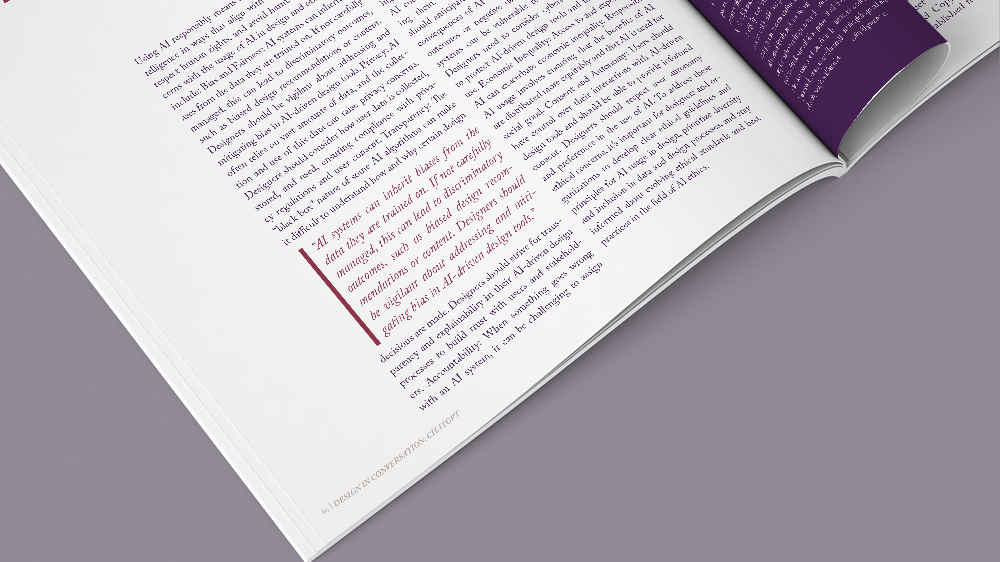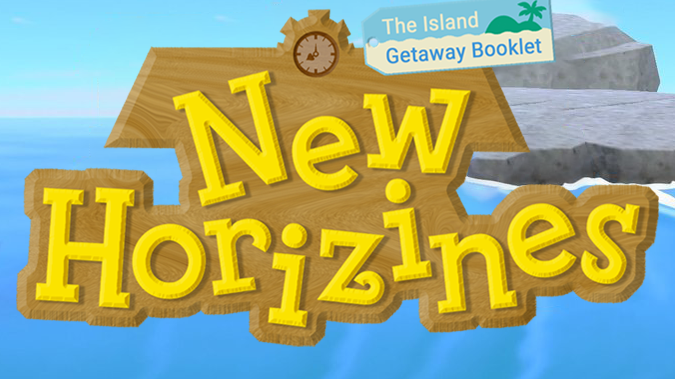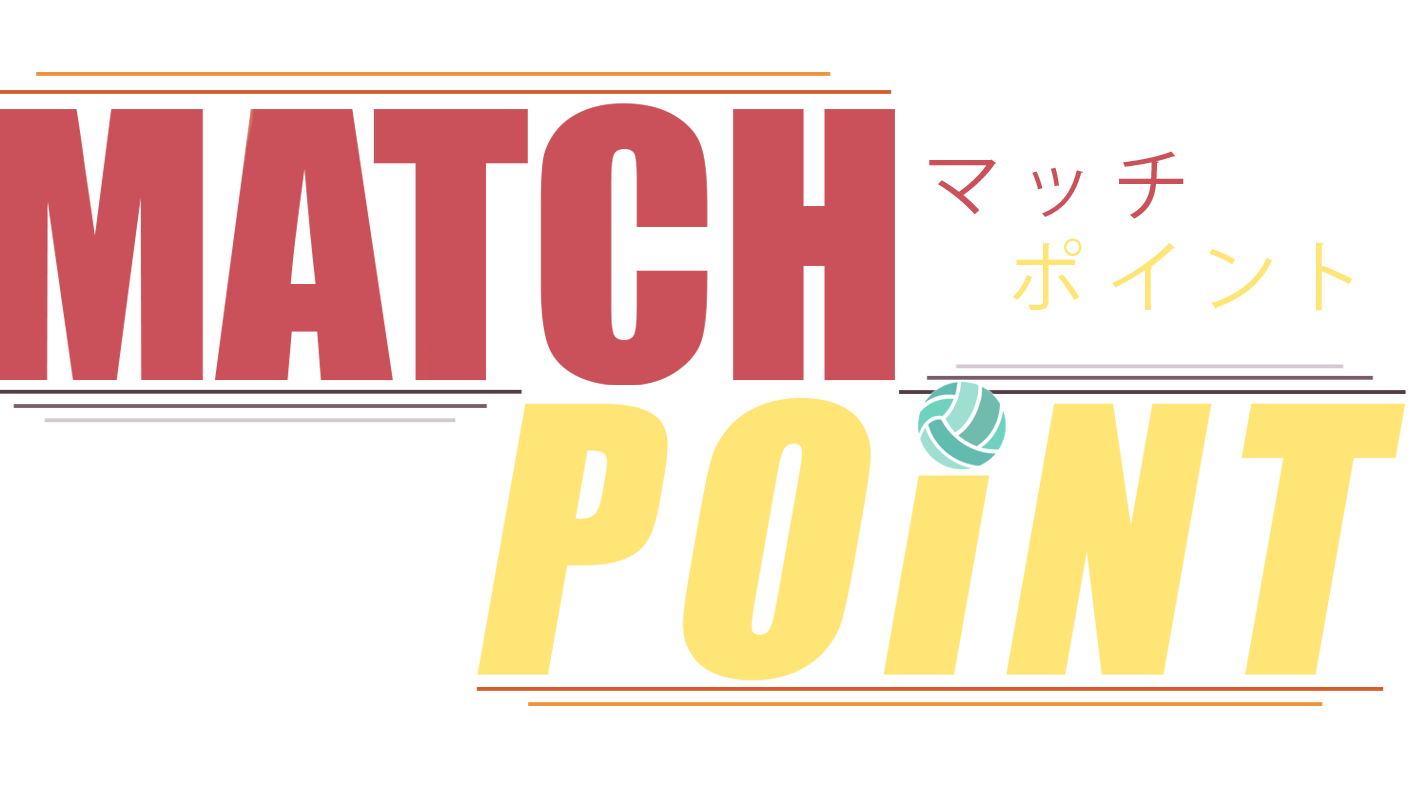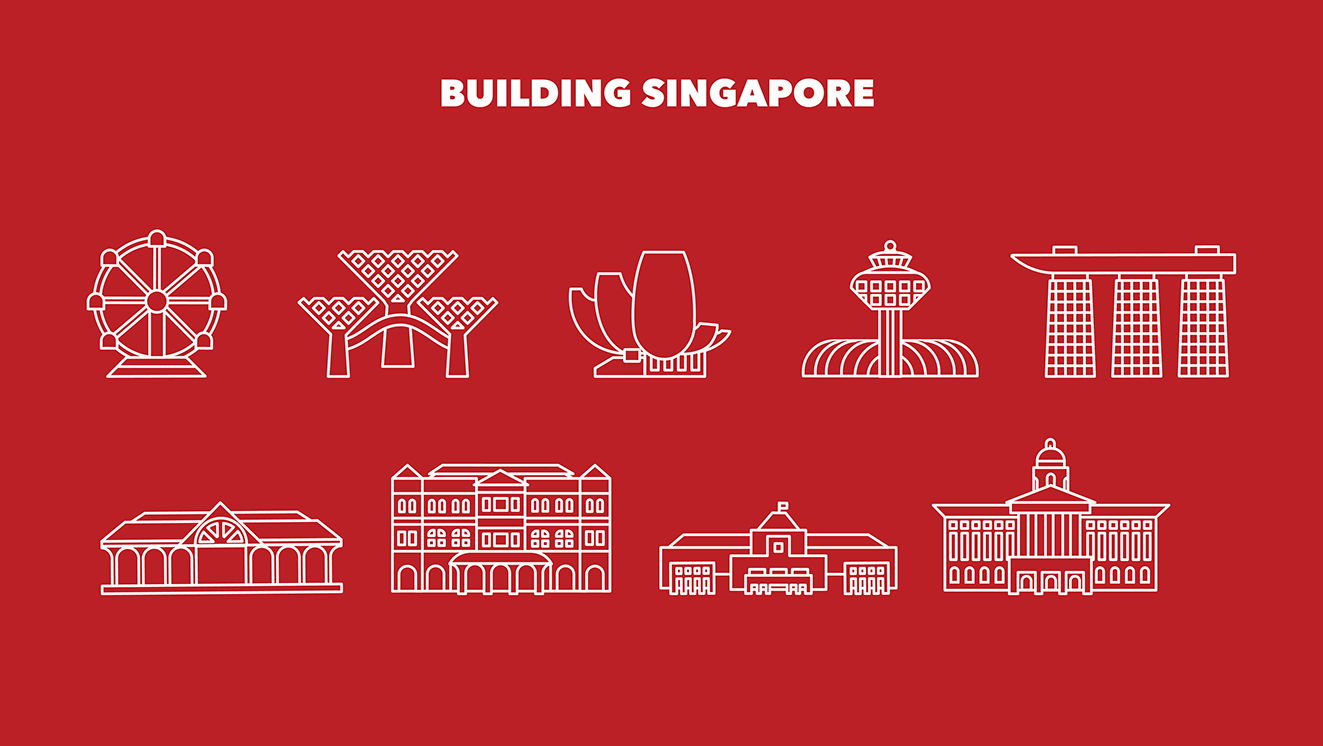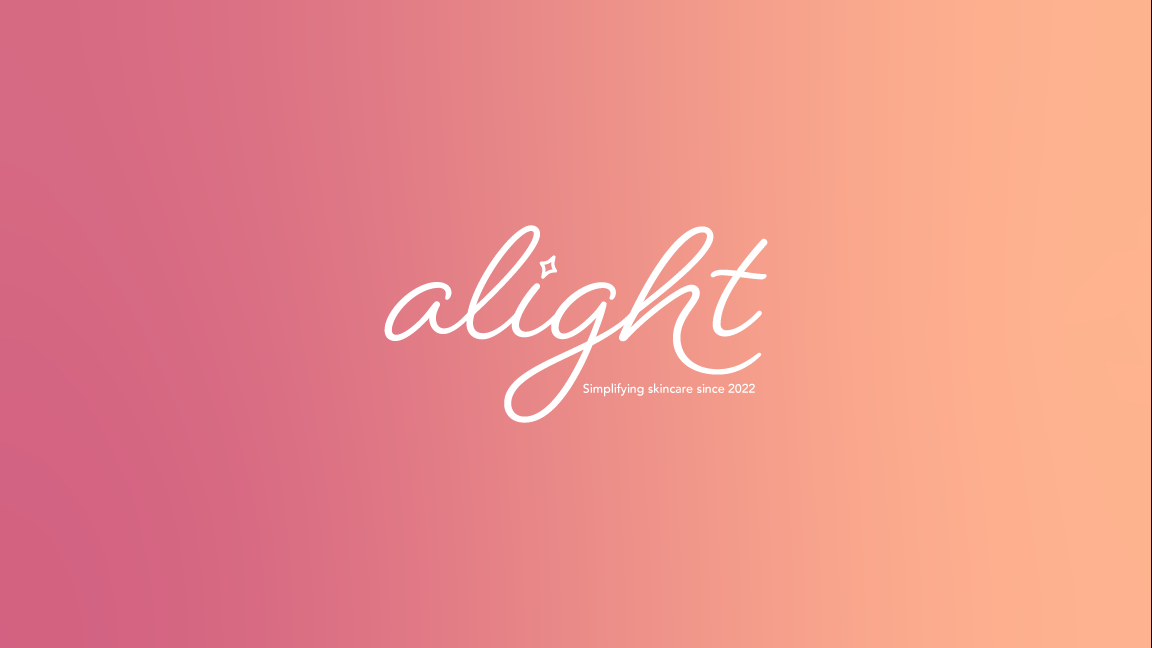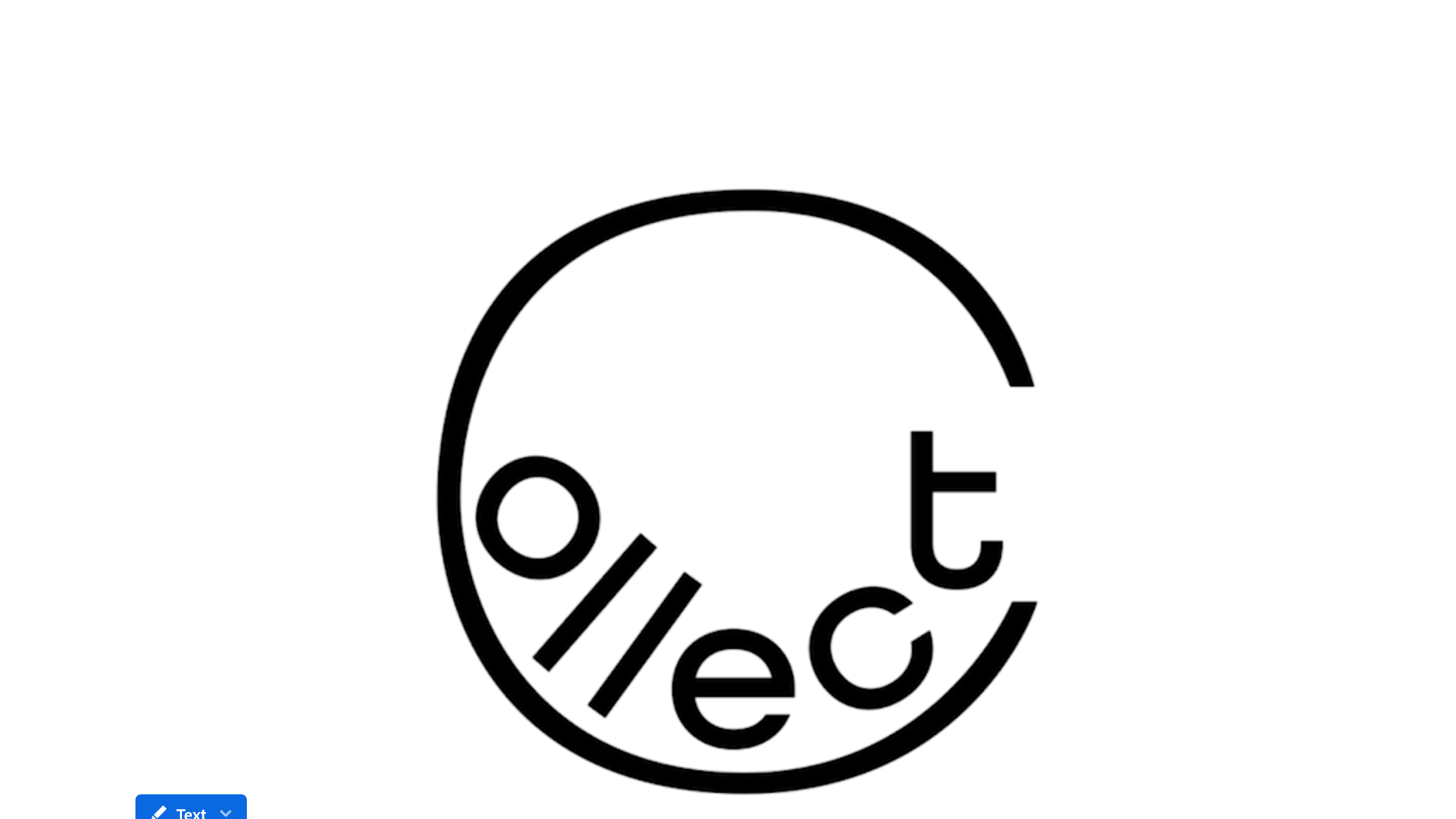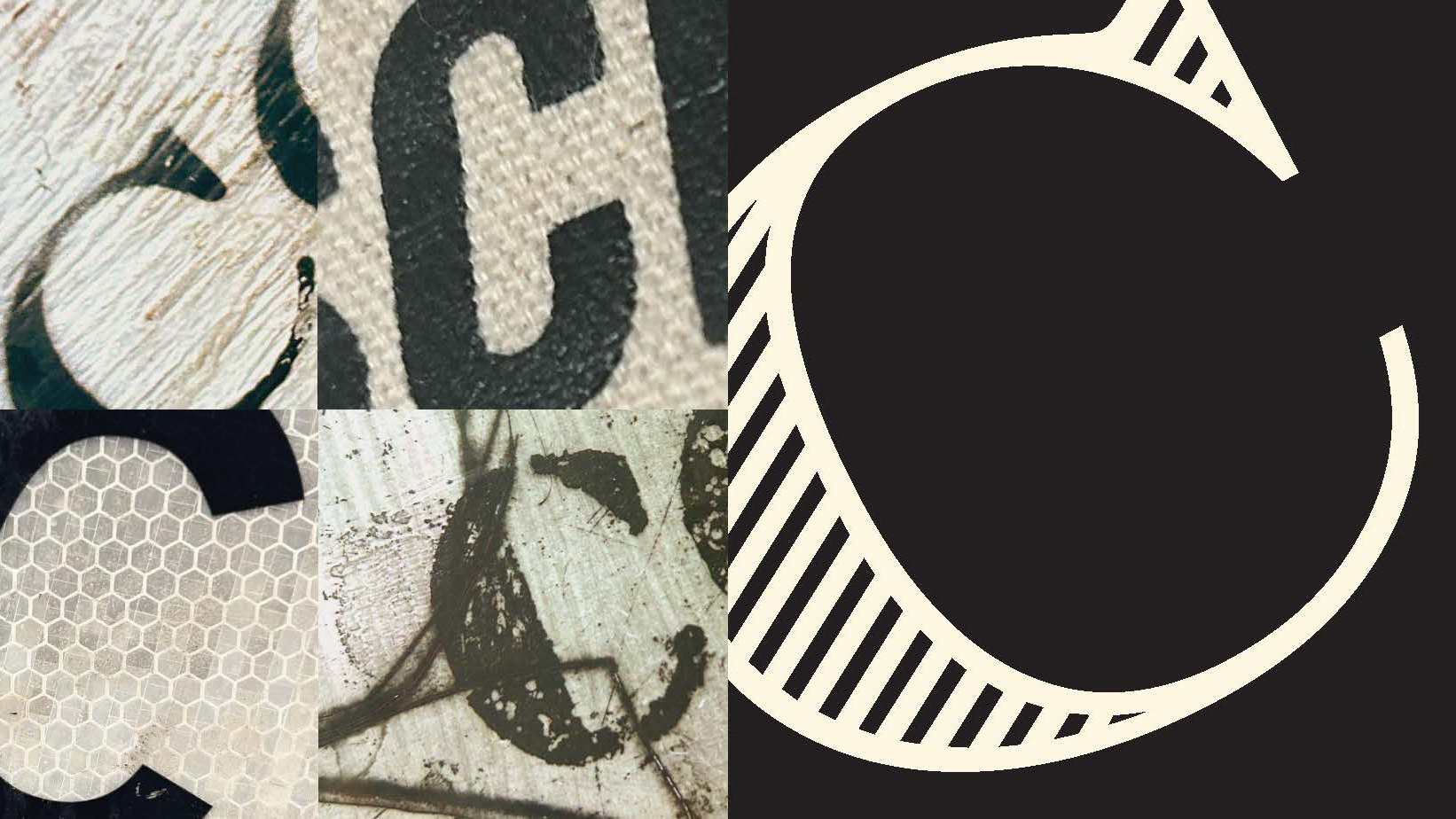Designed in partnership with Stephanie Chou and Kendrick Ma, this product was made for DES 206 Design Methods and was my first step into the participatory design process. We were given roughly 10 weeks to go through the entire design process. You can read more about the project below!
As design sophomores at the University of Washington, we anticipated taking Design Methods, a class where you spend the entire quarter working on one project. As the previous classes were based on fast-paced projects, we found the prospect of focusing on one project exhilarating. Now that we have completed the class, we are proud of what we accomplished and, more importantly, our newfound knowledge on the process as a whole. We invite you to join us on our journey as you scroll further.
Simmer has a wooden finish to create a timeless and seamless look. When a new recipe is received, it glows gently to inform the user. The projection turns on when the user says “Hey Simmer”, or when they wave a hand in front of the camera.

An additional supplemental image showing the call and response system.
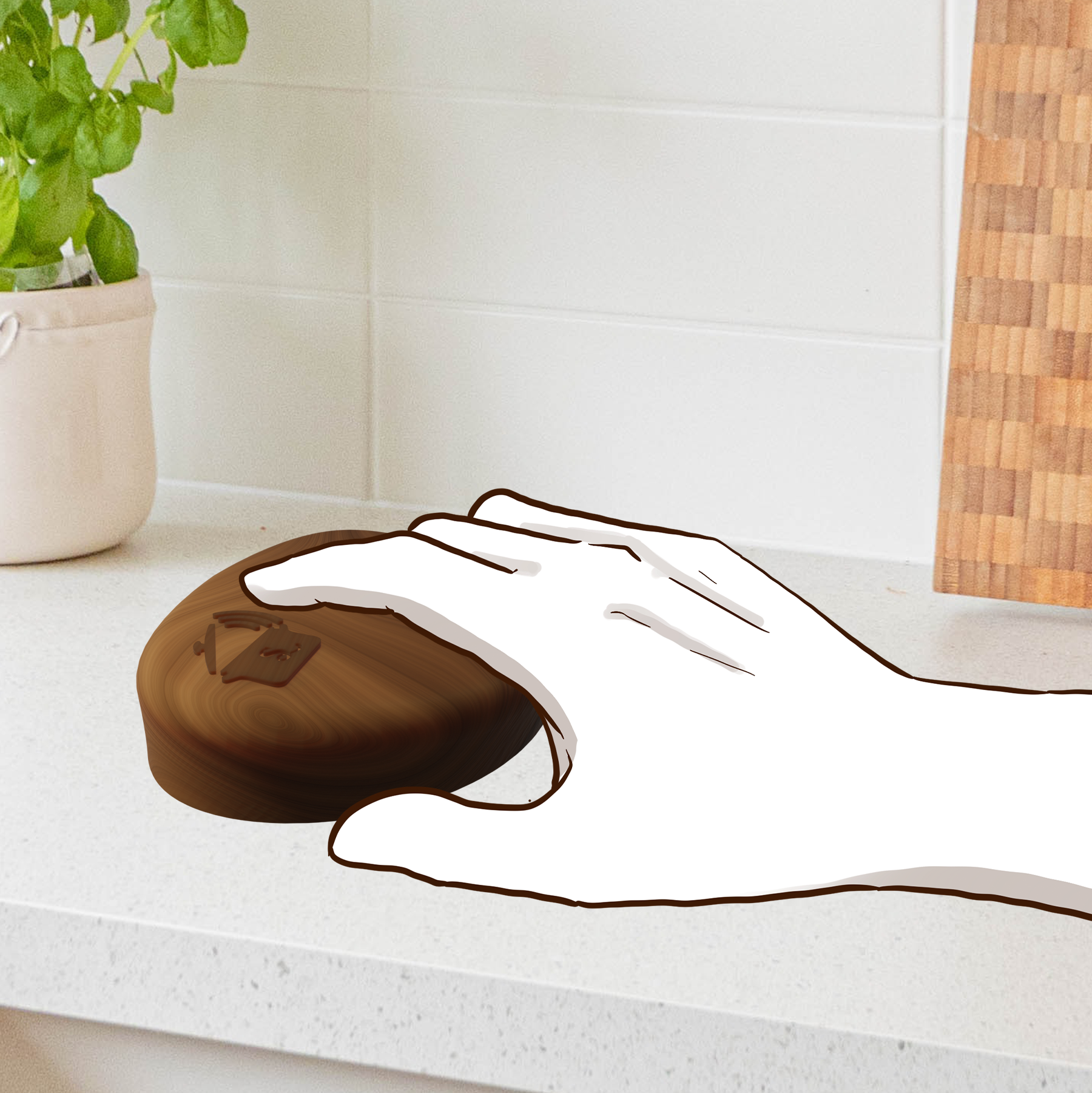
An additional supplemental image showing the portability.

An additional supplemental image showing the camera function.
The final poster we submitted for our showcase.
Project 1: Interviews and synthesis
When we were given the prompt “Revealing Heritage Through Food”, we quickly decided to focus on first-generation Americans or immigrants. Knowing that we had an interview turnaround time of a few days, we sent out a screener survey on various social media platforms, the most responses coming from the UW Parent Group on Facebook, receiving over 70 responses and 20 interview volunteers.
We held our interviews in a semi-structured format, through which we encouraged participants to direct the conversation so they would feel more comfortable sharing their unique perspectives.
After the interviews, we synthesized our data to come up with 3 to 4 insights and a “How-Might-We” statement. This How-Might-We statement would drive our project for the rest of the quarter. We decided to move forward with “How might we help families celebrate cultural holidays through food over long distances to elicit the feeling of home?”.

The first poster we made from the information we learned during interviews. This details the people we met and the questions we answered.
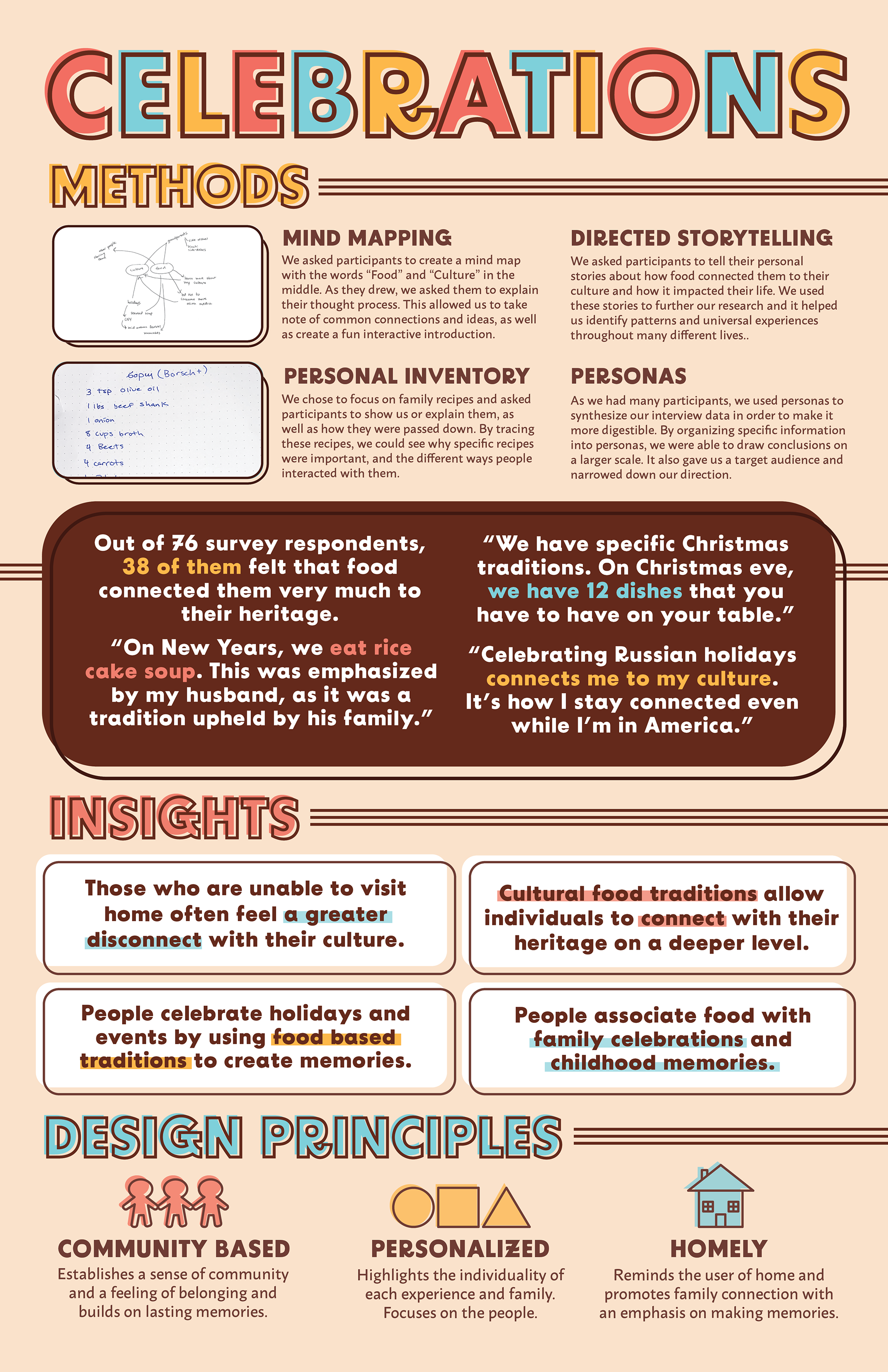
The second poster we made from the information we learned during interviews. This details the methods we used to gather information, the data gathered, and the conclusions we made.
Project 2: 60 Ideas
Next, we had a week to ideate 60 different concepts based on our “How-Might-We” and compile them into a stack of quarter pages. The three of us decided to split ideating into 20 ideas each while constantly communicating to prevent overlaps. Once we each had our ideas, we came back together and laid them out on a table. Then, we began to sort.
As expected, it was easy to throw out a majority of the ideas, but it did give us a very fast and effective way of getting an idea of exactly what we wanted to produce. We selected six ideas we thought were promising to explore, and started to brainstorm on how we could improve them.
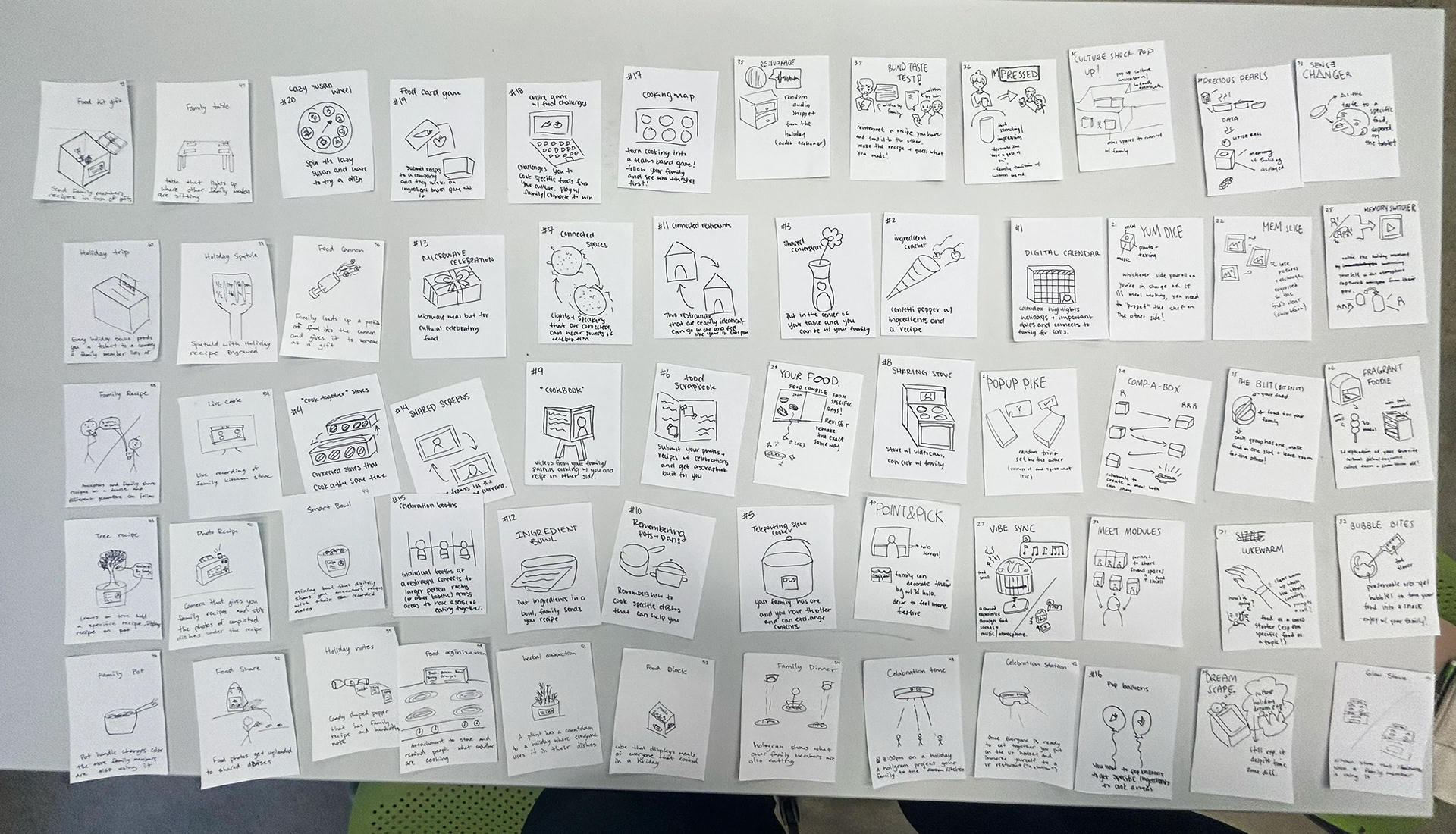
All 60 ideas laid out on a table
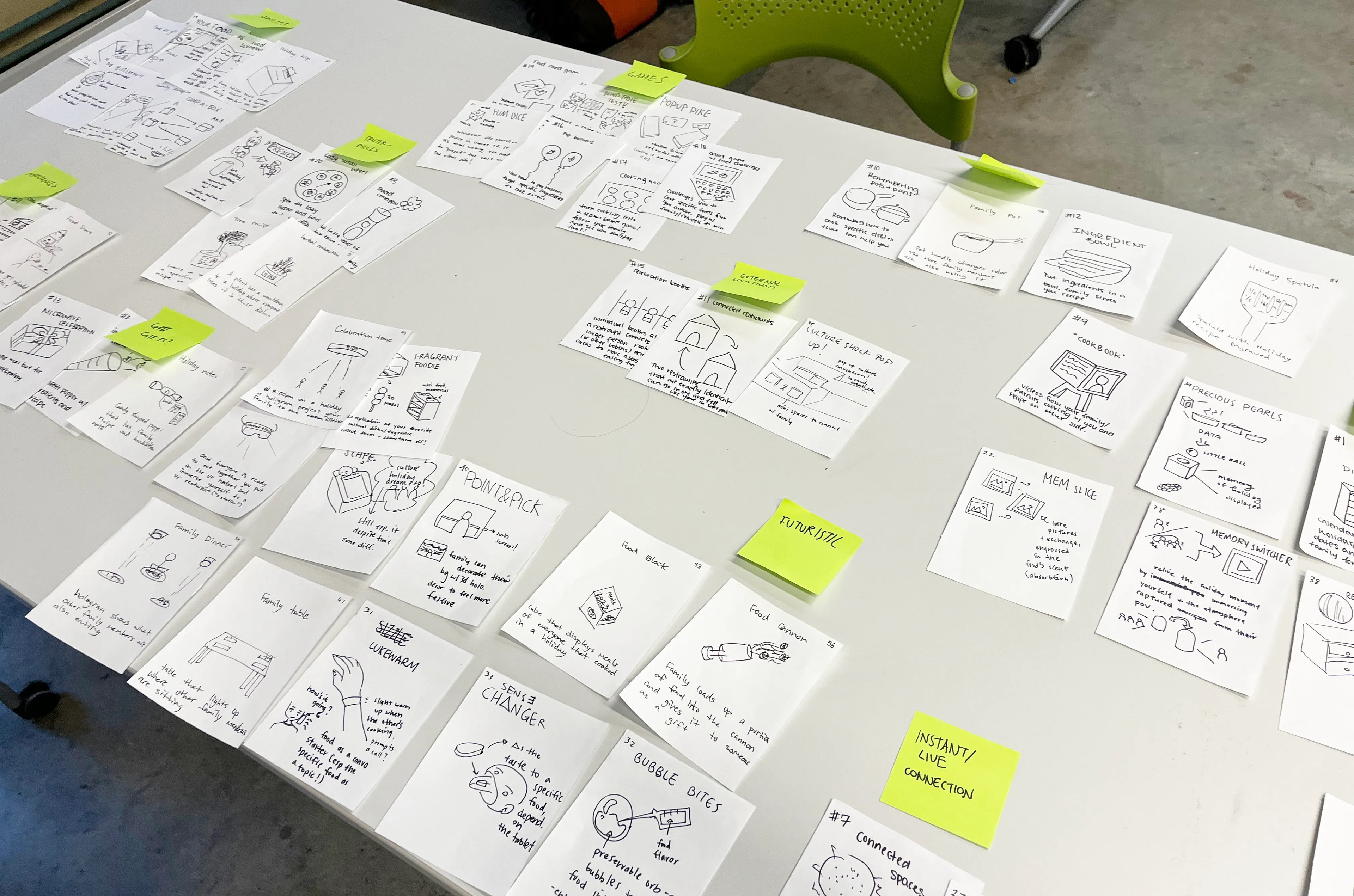
60 ideas sorted (and a bunch disgarded)
Project 3: Three main ideas
After picking those six, we were prompted to narrow further to three, in order to make a poster for each. However, we quickly hit a roadblock after brainstorming: we felt that only one of these ideas was concrete enough.
In order to solve this, we ran another ideation session; we identified why we liked the remaining idea, and what we could take from our previously-discarded concepts. Eventually, we found two additional ideas that both matched our How-Might-We statement and were intriguing enough to explore further.
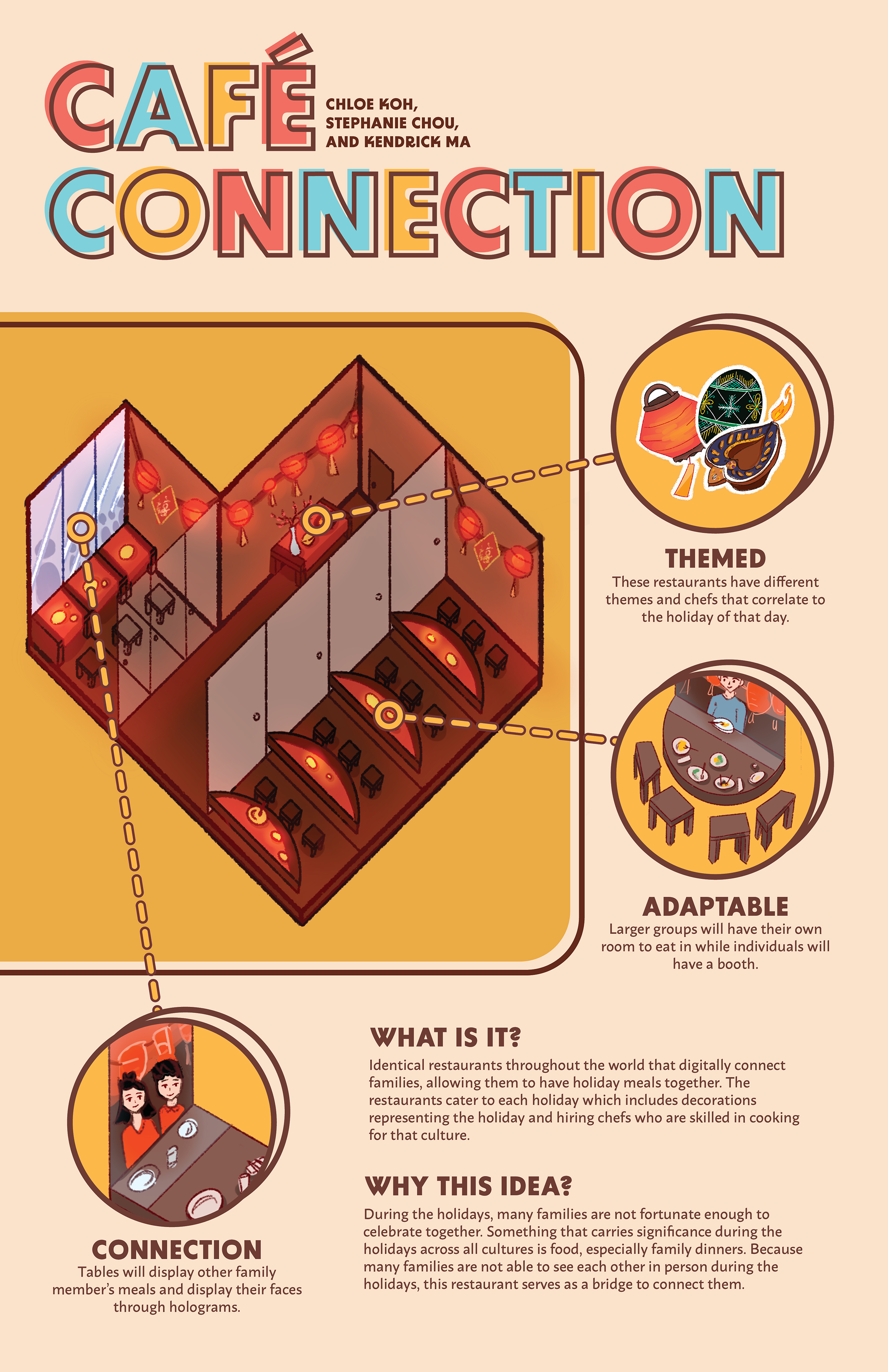
Poster for our first concept.

Poster for our second concept.
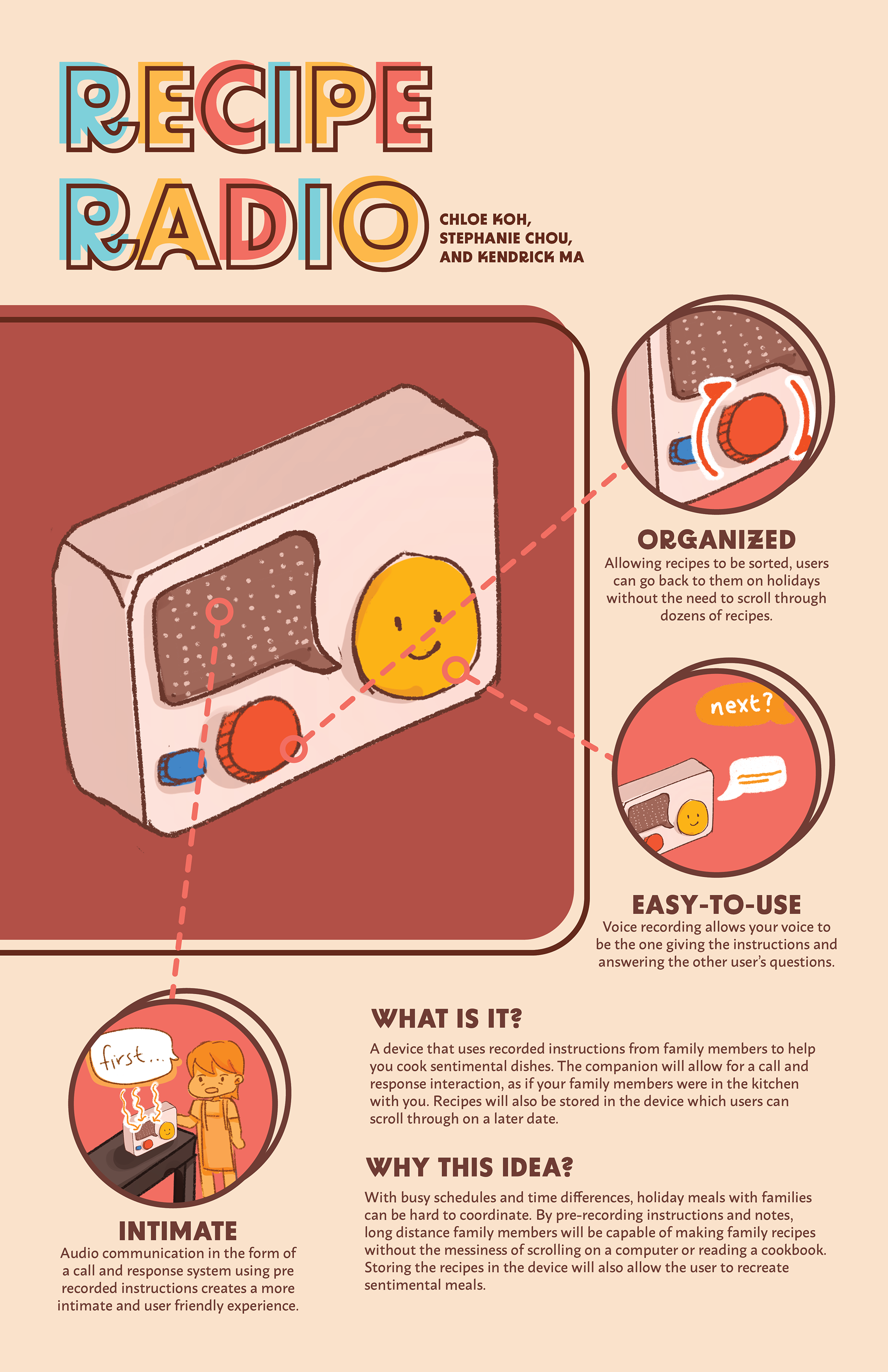
Poster for our third concept.
Project 4: Participatory Design Workshop
After a lengthy and informative critique session we wanted to move forward with our food-radio FM concept. Knowing this, we went back to the participants; not to interview them, but instead for them to design with us. We knew from critique that we had to change the form, the colors, and possibly parts of the concept, so we designed a workshop that targeted those holes. We had the participants do four different activities: a warm-up, a talking exercise, a making exercise, and an enacting exercise.

WARM UP: We asked participants to pick four to five different colors from a selection of paint chips that reminded them of home.
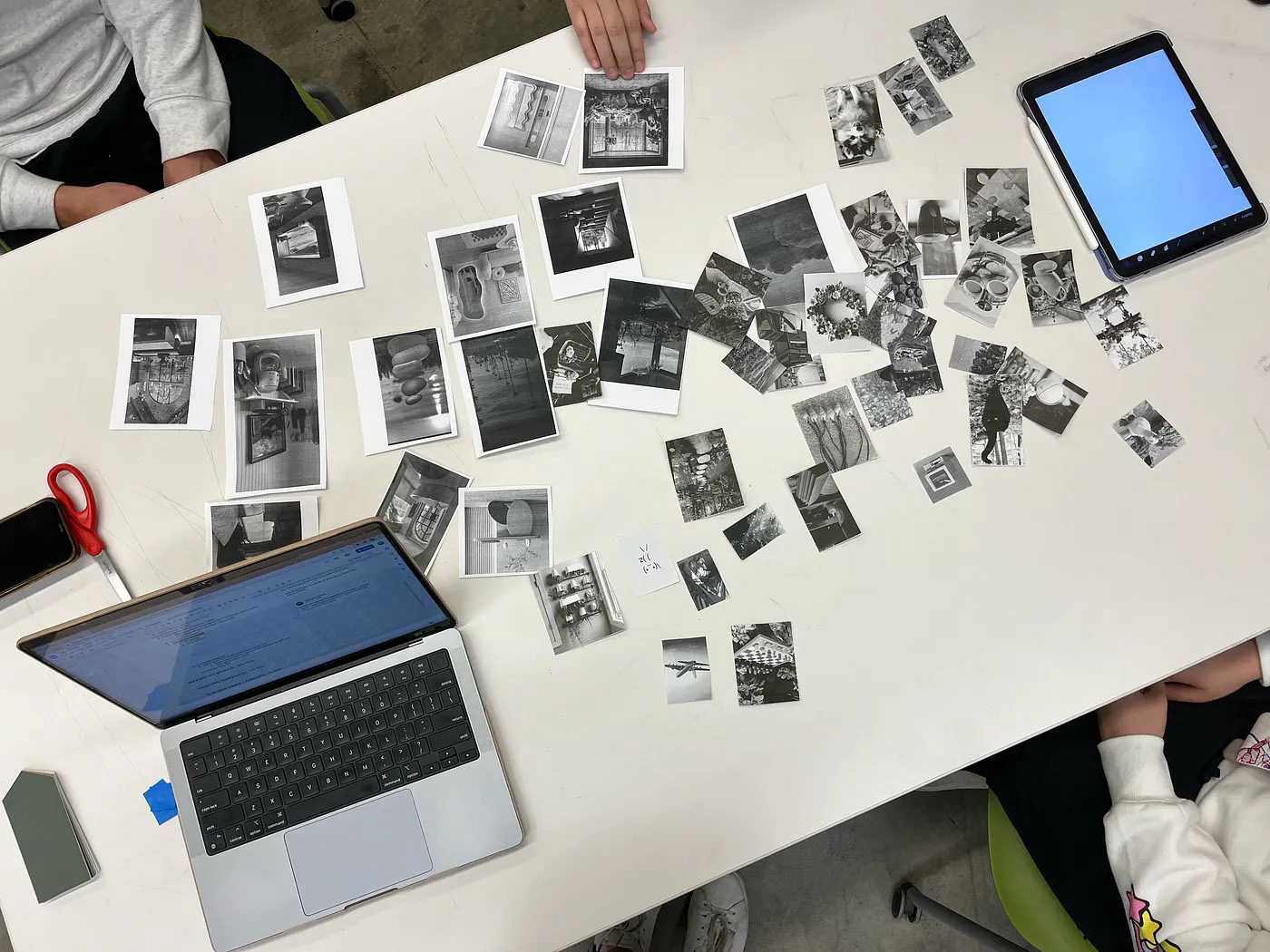
MAKING: We instructed participants to create a collage using random images pulled from Pinterest in order to illustrate their household kitchen space.

ENACTING: We asked participants to guide us through their created space via bodystorming.
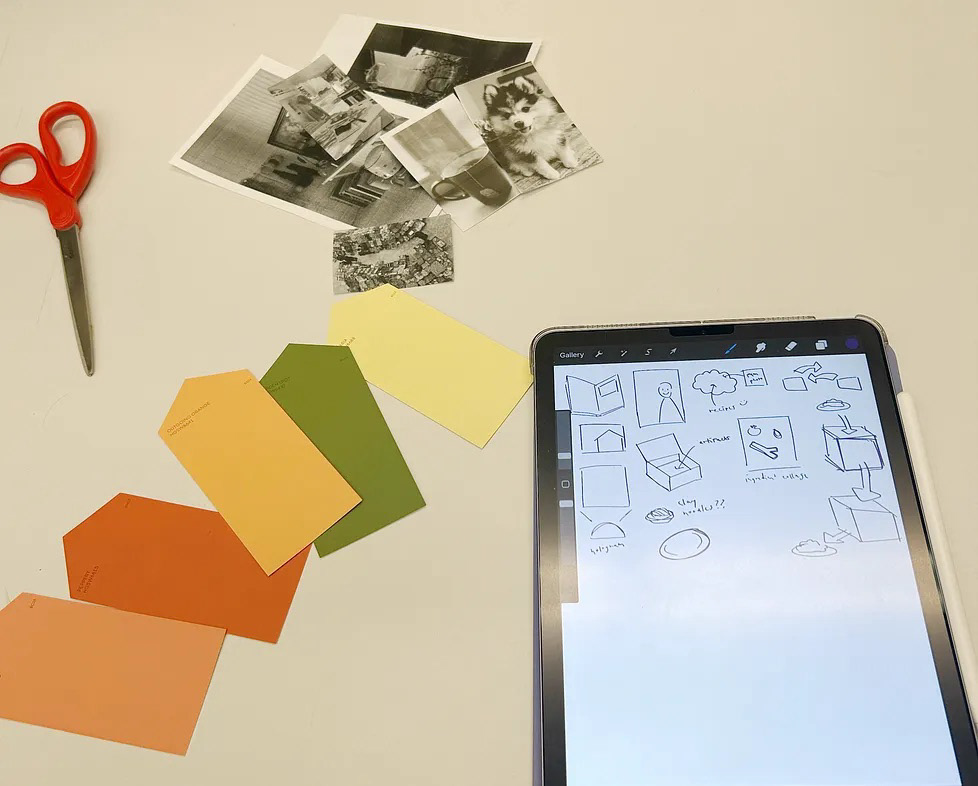
TALKING: We asked participants to imagine different solutions to sharing recipes, increasing the difficulty by adding different constraints.
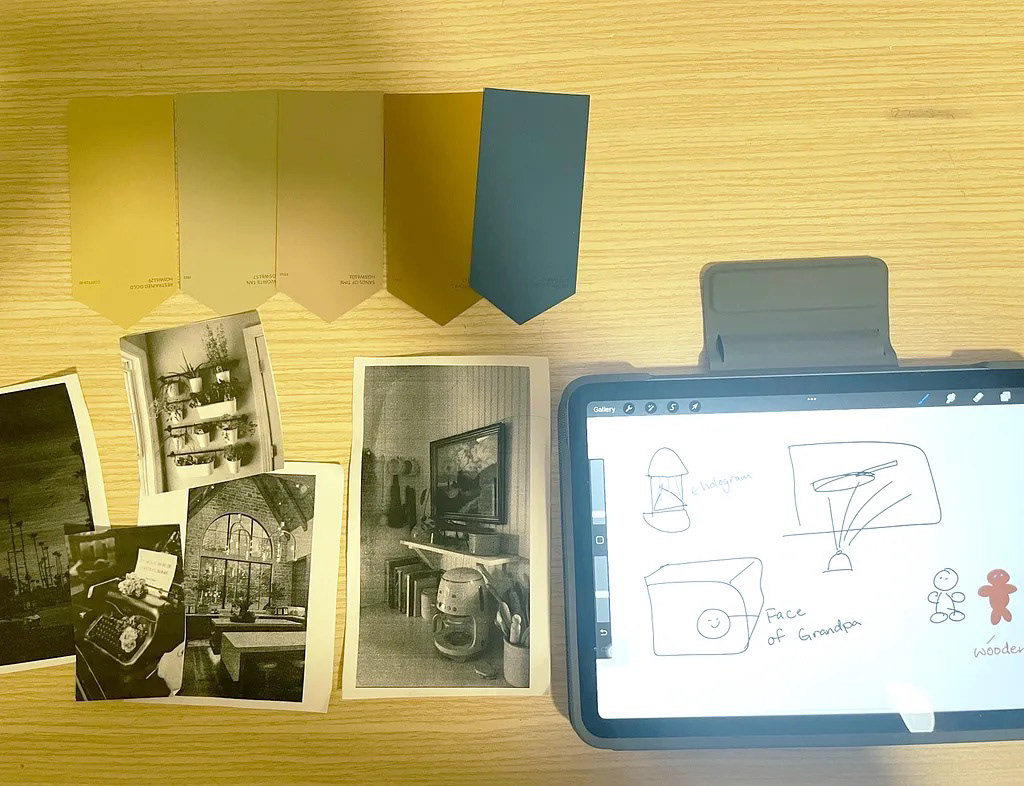
A second particpant's materials!
After this process, we realized that the variety of holidays in different cultures, from religious to celebratory means, would create a greater issue of making an inclusive product that was also effective. As a result, we decided to change our How-Might-We statement to: How might we help families stay connected through cultural food over long distances to elicit the feeling of home?
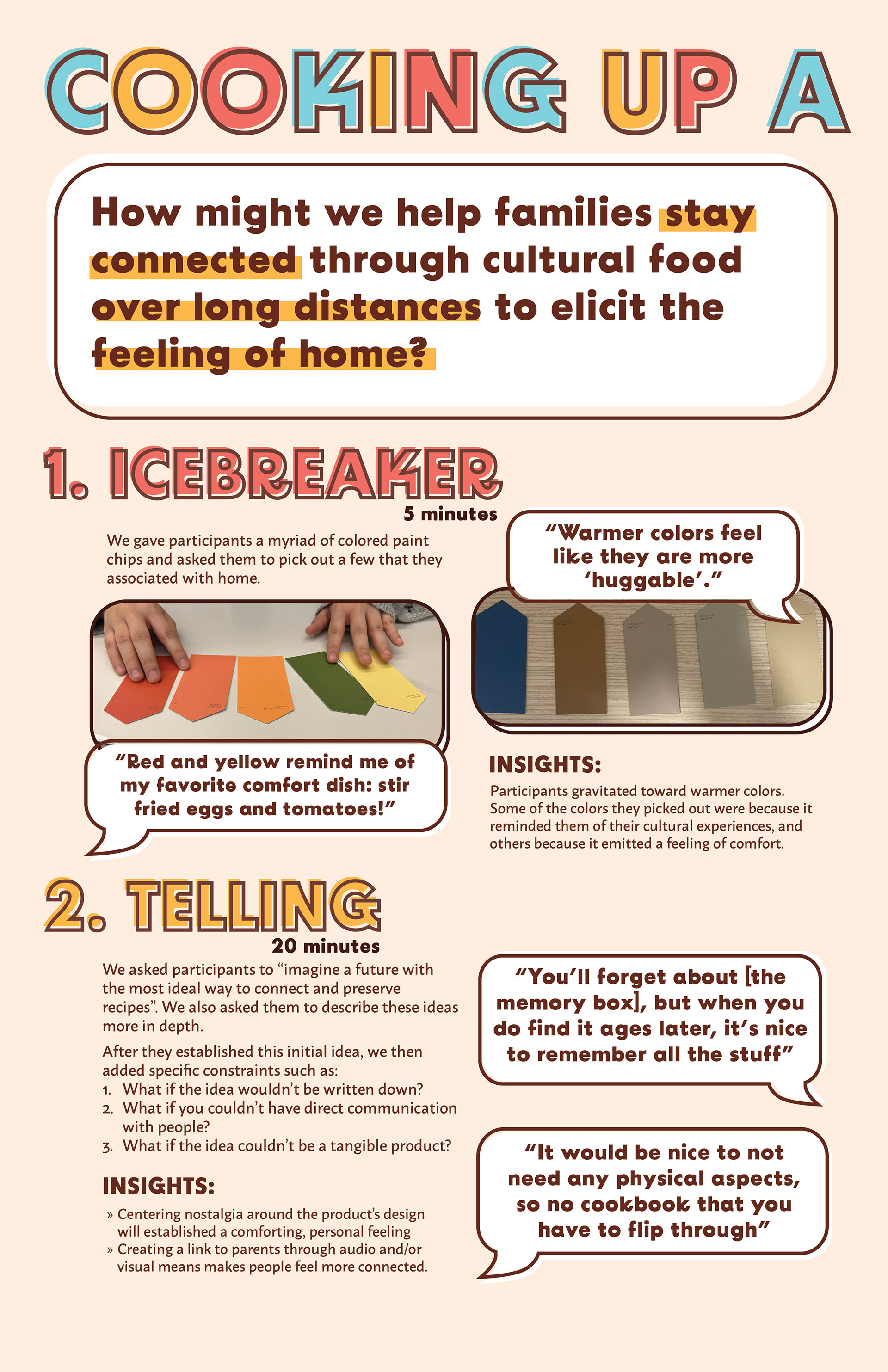
The first poster we made for this project, detailing how we conducted the interview.
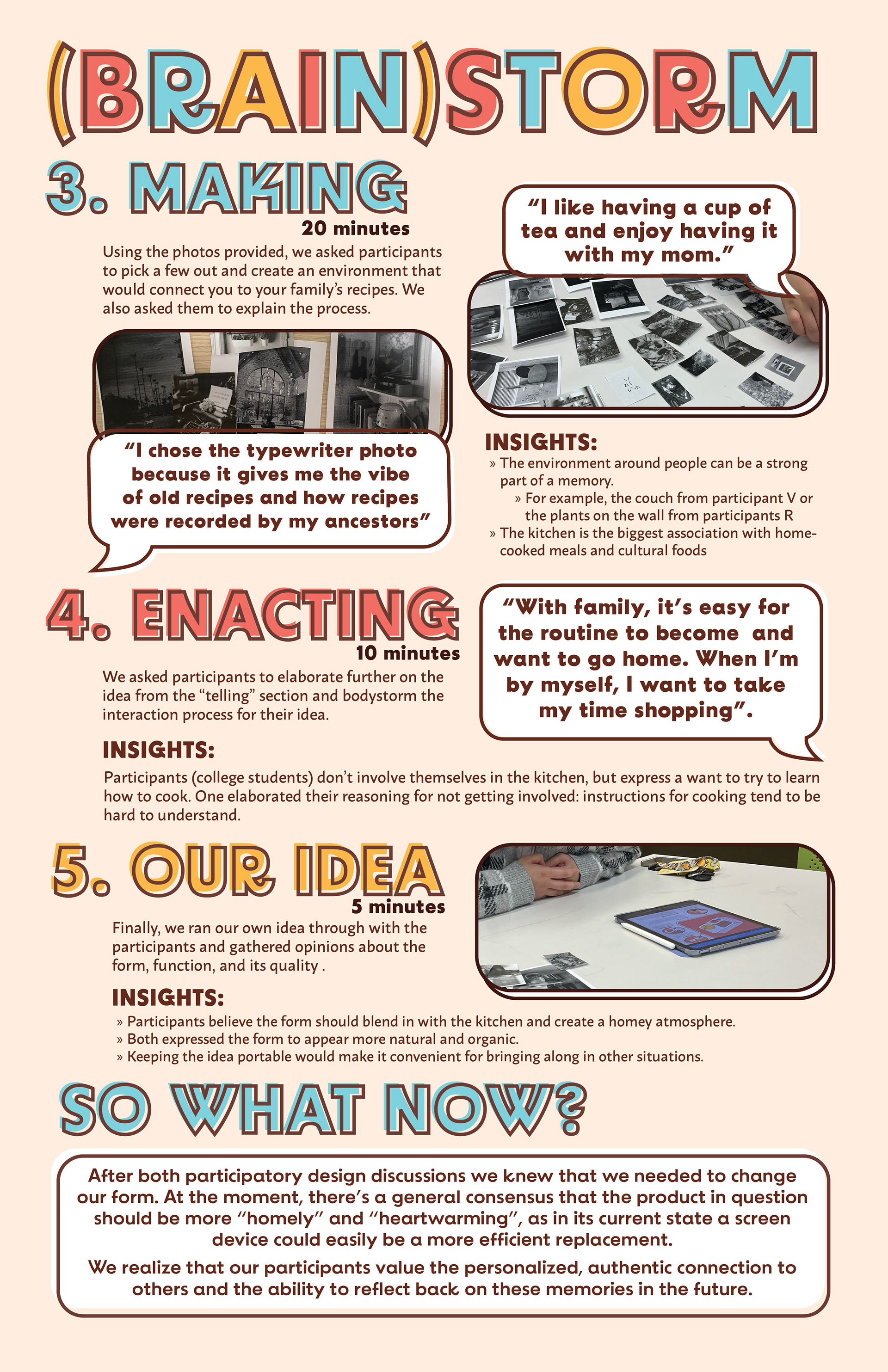
The second poster we made for this project, detailing the specific methods we used and what we learned.
Project 5: Storyboard
Next, we had to polish the story we wanted to tell with the product. However, we weren’t too certain on the form yet. Instead, we chose to flesh out exactly what interactions we wanted to highlight, deciding to focus mainly on the interaction of the call and response system.
The storyboard we submitted for this project!
Project 6: Participant Feedback Report
Participant time again! This time, we brought our storyboard to ask for their thoughts. As we were still deciding on form, we decided to take advantage of this opportunity to get some opinions on it. It was through this report that we decided to turn our device into a projector as we had added a camera due to the high demand of needing a visual aspect. If you're curious, you can read our participant feedback report here.
Project 7: Final Product
We were given the last two weeks to produce three final deliverables (shown at the very beginning!): A poster, a video, and this medium post. Our product concept would also make its debut at a final showcase our design class was hosting!

Modeling the prototype in OnShape

Modeling the prototype in OnShape

Creating screens and an interface map in Figma
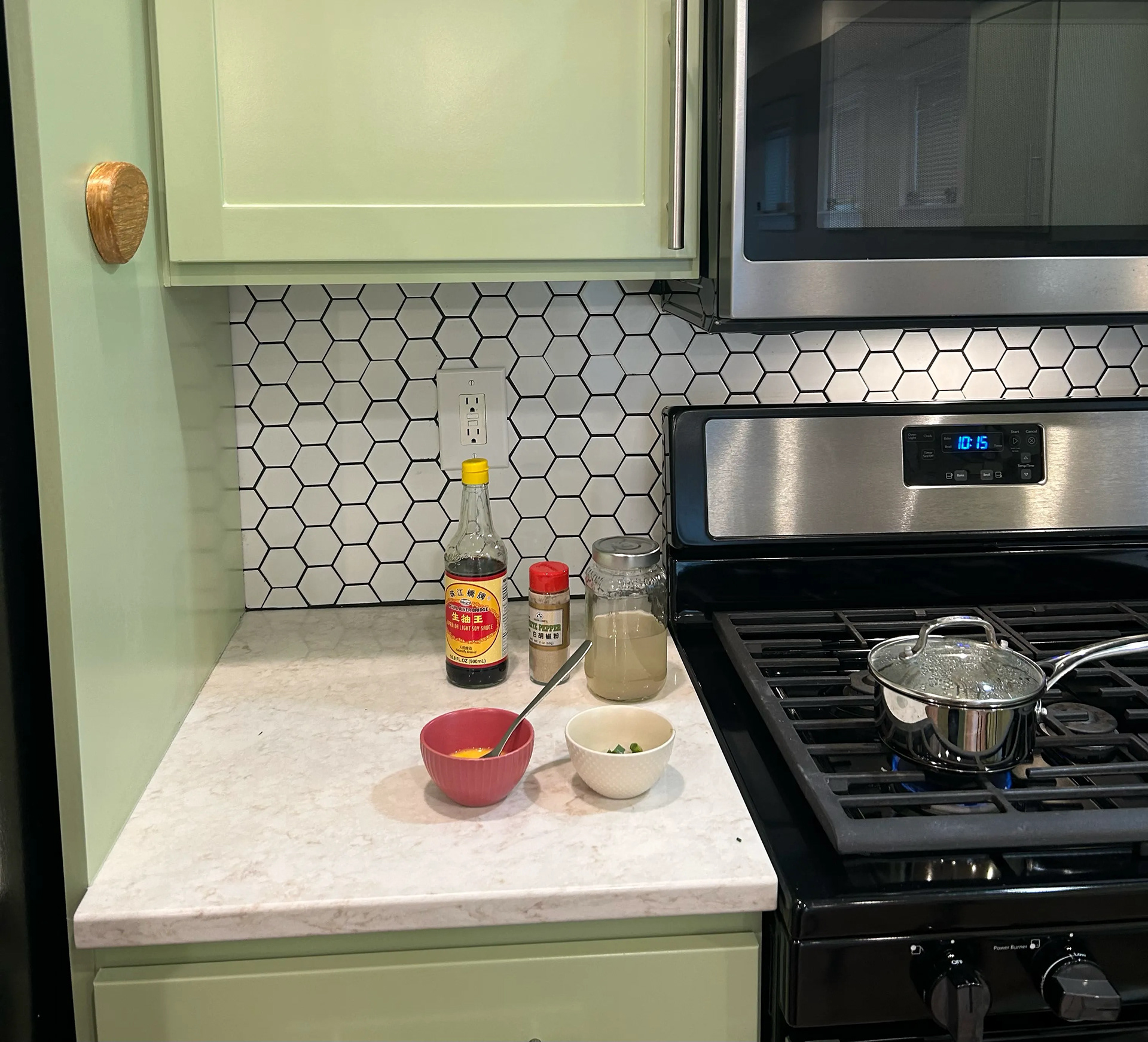
Our set for filming the video

Branding board for the poster and UI
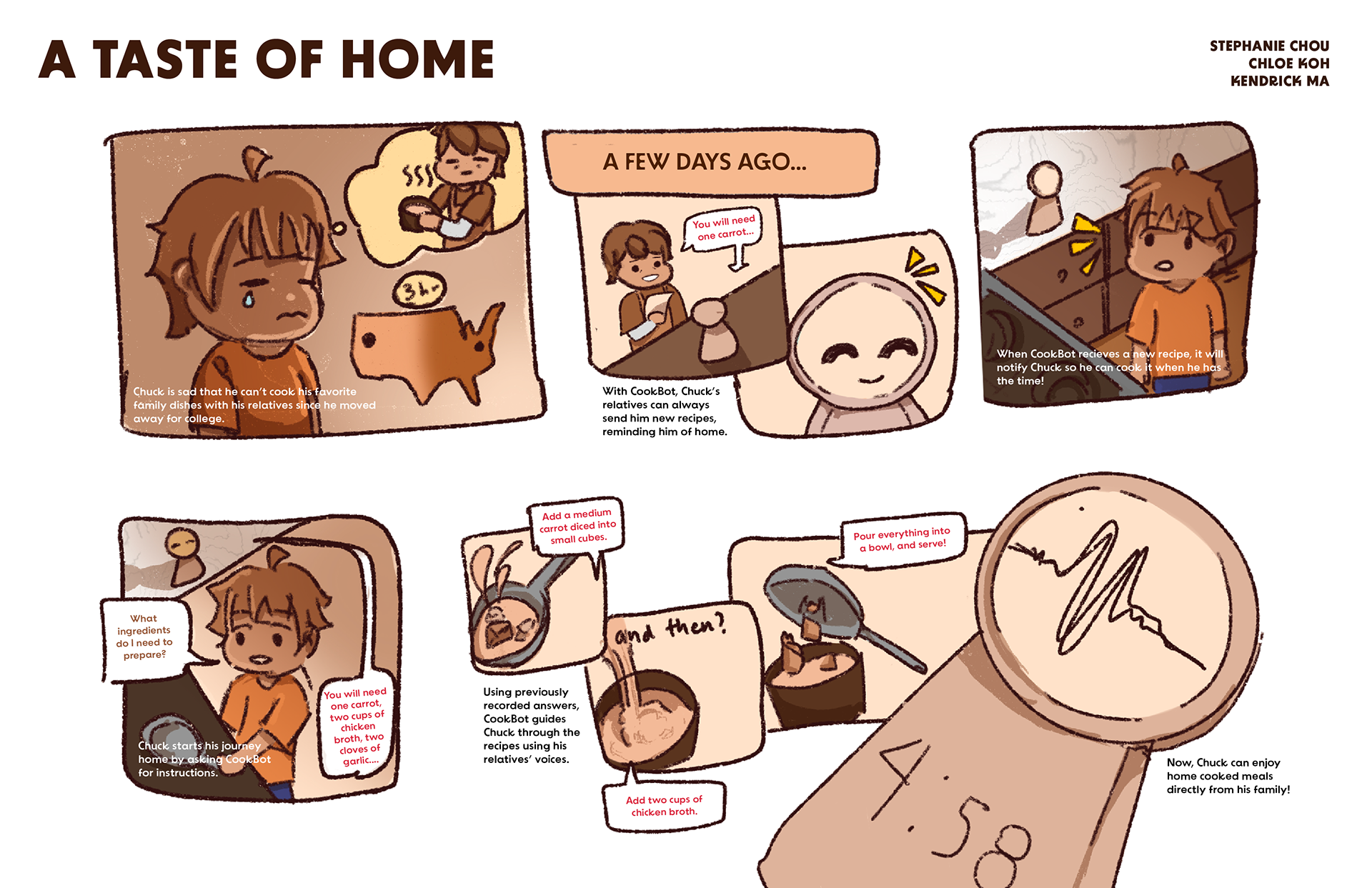
Our final storyboard
Now that we’re at the end of the quarter, it feels a bit wondrous that we really did it. While we believed we’d have adequate breathing room in comparison to previous projects, we were quickly proved wrong; each project reflected a unique stage of the process in what was often a week to complete it. We went into the quarter with absolutely nothing, and have come out the other side with a new respect for the design process and a very cool product, if we do say so ourselves.
All in all, it just goes to show that there’s so much thought put into products that often goes unnoticed, yet is the very reason for the product’s existence. We hope this inspires you to, if not to try out the process yourself, but to be a willing participant when you see an opportunity for participatory design! You never know what can come out of it.
A picture of me and my team from our final showcase date. A demo and prototype of our product is in the back. (From left to right: Stephanie Chou, Chloe Koh, and Kendrick Ma.)
